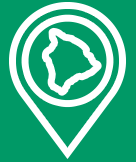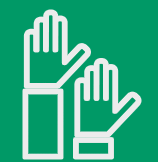Stay Connected
Subscribe to our mailing list and we will let you know about upcoming events, races, and community news.
Whittington Beach to Pahala
Sea level to 800 feet, 9.2 Miles
[google_maps id=”962″]
This route requires Advanced Bicycling Skills: Mastery of bicycle handling and avoidance maneuvers due to challenging conditions. Routes requiring advanced bicycling skills may include little to no shoulder, steep hills, curves and high levels of traffic.
You will be moving slow on the uphill portions. Watch for choke points at narrow bridges but shoulders are good except for those points. Bridges present choke points at least one per mile from mile marker 58 to mile marker 49.
Pahala has some services and is an example of old sugar towns. An excursion can be made to Punalu’u Black Sand Beach right turn at the Resort intersection. It is downhill to the sand then go left along the beach then back up a steep climb back to Highway 11. Swimming, camping (permit required) and refreshments are there.
Going the opposite direction? You’ll be moving downhill fast watch for those choke point bridges starting at mile marker 49 and check on traffic as you enter them.
Biking Safety Tips
- Wear a helmet every time you ride. Even if you just ride on bike paths or for a short distance, make sure you put on your helmet before you go.
- Obey traffic laws. Your bike is a vehicle, and just like a car, you must stop at stop signs and red traffic lights.
- Always ride with the flow of traffic. Even if you are riding a short distance, it is never safe to ride against traffic. Also, it is unlawful to ride facing traffic in Hawai‘i, as it is in all 50 states.
- Stop at the end of the driveway. Many crashes between a car and bike happen when riders don’t stop at the end of their driveway to look for cars. Always look left-right-left before entering or crossing a road.
- Be predictable. Don’t do anything that would surprise drivers, such as swerving in and out of parked cars or traffic.
- Look behind you, and make sure it is clear, before making a left turn or moving into the roadway. You should be able to glance over your shoulder without swerving. Also, let motorists know what you’re doing by using proper hand signals for turning and stopping.
- Be visible. Wear light-colored clothes when you ride, and try to get a bright helmet. If you ride at night, you must have a white front light and a red rear reflector.
- Don’t use headphones when riding. You need to be able to hear the traffic around you. Save your radio and tapes for relaxing after your bike ride.
- Don’t ride too close to parked cars. A driver may suddenly open the door in your path. Leave at least 3 feet of distance when passing parked cars, and be alert for cars that may be pulling out into the road.
- Make sure your bike is safe. Before you leave home, check to make sure that the brakes work, the seat and handlebars are tight, and the tires are properly inflated and in good shape. Also, make sure your bike is the right size. A bike that is too big is more dangerous than one that is too small.
Bring the Following Items
- Spare tire
- Spare tubes
- Bike-mounted tire pump or co2 cartridges.
- Equipment to change flats
- Lite Jacket
- Lite Rain Jacket
- Layers for the east side and Volcano.
- Special Needs Nutrition
- Carry at least two water bottles on each ride, 3 or 4 is better
It should be understood that participation in physical activity can be potentially harmful and can include inherent risks for individuals who are both healthy and those who have special health needs. It should be understood that participants undertake activity at their own risk and that they are responsible for making sound judgments regarding what activity is appropriate. The recommendations listed in this bicycling guide are in, no way, meant to replace medical advice or recommendations. All participants are encouraged to seek medical clearance before beginning an exercise program or enhancing an existing activity program. Anyone under the age of 16 riding a bike in Hawai`i must wear a helmet [ß291C-150]
Automobile drivers in the state of Hawaii are multicultural and have diverse attitudes, skills and experiences when it comes to dealing with cyclists on the road. Caution: Cyclists must take a proactive and defensive posture in riding in Hawaii.
Bicycle Riders follow basic traffic rules: i.e., Ride on the right side of the road. Exercise judgment toward safety and ride on the right shoulder if possible. Stop at traffic signals and stop signs. Move into left turn lanes when safe to do so.
Take care. The Island of Hawaii is split into road sections either by topography or by small urban centers as necessary to accommodate safe and fun bicycle excursions. Comments are made at each boundary of those sections. Comments are about: shoulder conditions, traffic choke points, times that cyclists should exercise extreme caution due to traffic/work/school patterns.
PLEASE NOTE: This guide is published as an aid to bicyclists, hikers and other users. PATH in no way warrants the safety or suitability of the routes indicated on this guide for shared use with motor vehicles or for use by young and/or inexperienced users. Users assume the risk for their own safety at all times when traveling on the indicated routes and trails. Although PATH has made a reasonable effort to ensure that the information contained in this guide is correct as of the date of publication, the actual conditions riders encounter may vary, and the organization in no way warrants its accuracy.
PATH assumes no liability for personal injuries or property damage suffered by users. Mahalo to John Luchau for his careful research of cyclng conditions around the island. Information for this guide was obtained from Na Ala Hele (www.hawaiitrails.org), the State of Hawaii Department of Land and Natural Resources State Parks (www.hawaiistateparks.org) and Mountain Bicycling the Hawaiian Islands by John Alford (2010).
FOR FURTHER QUESTIONS OR TO SUBMIT FEEDBACK: Please contact PATH by mail at
PATH PO Box 62 Kailua-Kona, Hawaii 96745,
Email: info@pathhawaii.org

© PATH Hawaii. All Rights Reserved.
Web site by Christopher Green Design - Web Development and Graphic Design





